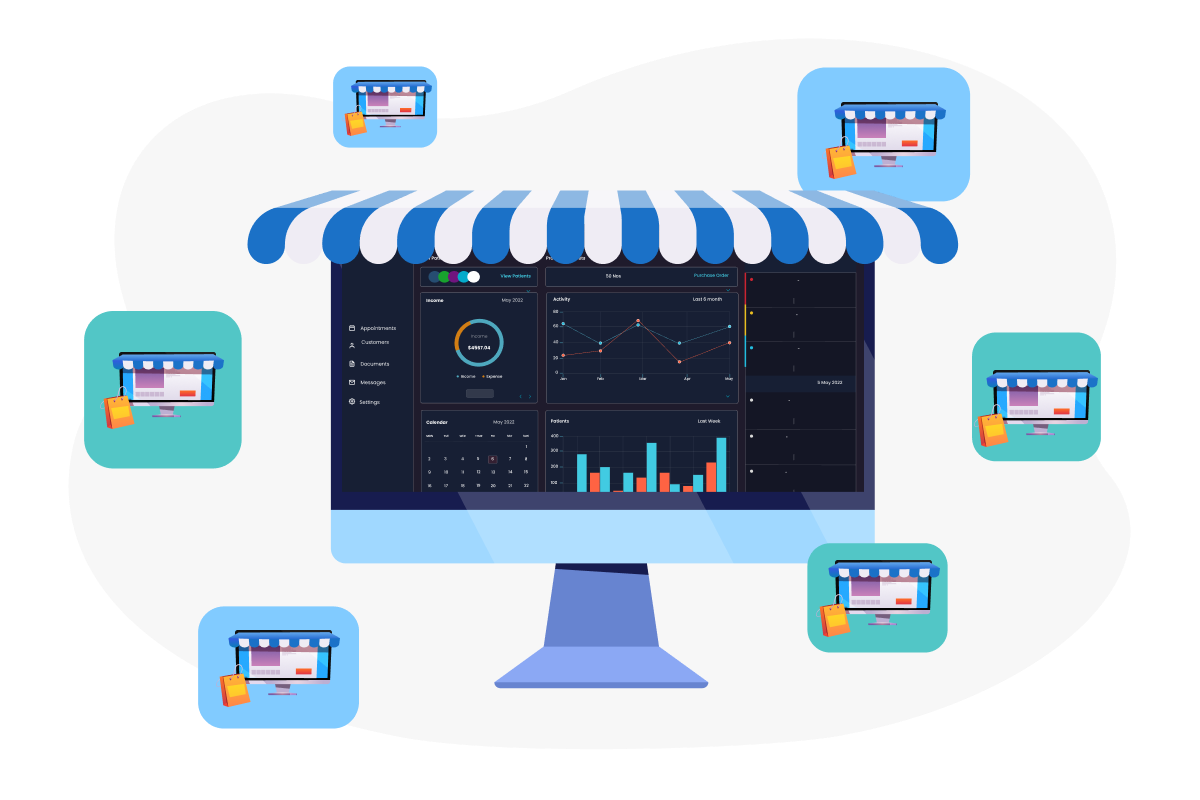
Logging into and managing each of your online stores separately is a thing of the past. It is time to consider the possibilities of expanding your uniform business into new regions, across customer segments, or launching unique brands — all from a single dashboard.
Such an approach can be achieved using an e-commerce platform capable of combining multi-storefront operations into a single administrative hub.
A multistore eCommerce solution enables you to create sub-stores within your store, which are all managed on a single dashboard. Creating a multistore eCommerce platform could be done for a variety of reasons, such as brand differentiation, international expansion, multi-segment targeting, or catering to different customer types.
Some notable features of a multistore include:
Uniform businesses can create multiple stores for each of their customers to provide them with a customized buying experience. 
Having a single administrative control enables businesses to manage all their products, customers, orders, shipping, and transactions all from one central dashboard.
Sometimes seamlessly managing each of your stores can be a headache, as each store is unique.
A few ways businesses can manage and control each of their stores through a single dashboard are:
Maintaining inventory databases is a major issue in the development of multiple online stores. Stock level discrepancies are often unavoidable when dealing with separate inventories.
If you have two sites selling the same product, for example, you will have to manually reconcile each inventory, and if they are not reconciled at regular intervals, you risk having inaccurate stock levels.
A single master copy of the inventory database can save time while avoiding order fulfillment issues.
Developing a master inventory database gives the ability to control and manage multiple stores from a single dashboard.
Providing a fantastic customer experience is one of the most important aspects of eCommerce in general. However, the number of possible complexities increases with the number of stores included in multi-store e-commerce platforms.
When a vendor is running multiple stores with the same or similar brands, the brand manager has to ensure that the brand’s message stays consistent across every store.
Integrating your platform with a CMS ensures that your content will be consistent across all platforms. It also helps to provide a seamless experience to users no matter which device or screen they are using.
Managing search engine optimization (SEO) for multiple online stores is a massive undertaking. You must consider how to optimize title tags, header tags, meta descriptions, and so on for each online store.
When you only have a few stores, say two or three, it is manageable, but when you have hundreds of sites to optimize, it becomes extremely time-consuming.
UniformMarket’s built-in SEO tools (like customizable URLs, image optimization to canonical tags, and auto-generated Open Graph tags) can help you tackle this problem and help you grow your store’s online traffic.
Finally, but most importantly, you need a flexible and user-friendly multi-store eCommerce solution like UniformMarket to intelligently connect all of these threads together and prevent them from becoming a tangled mess.
Unique storefronts for each facet of your business, all managed through one dashboard enable efficiency while reducing operational costs and complexities — helping you build an unbeatable experience for every customer.
.png?width=800&name=UM%20multi-store%20blog%20infographic%20(800%20%C3%97%201800%20px).png)
The presence of a multi-store under a single admin ensures that the business framework is correct and consistent across all stores. Saving the vendors time and effort while also enhancing the customer experience.